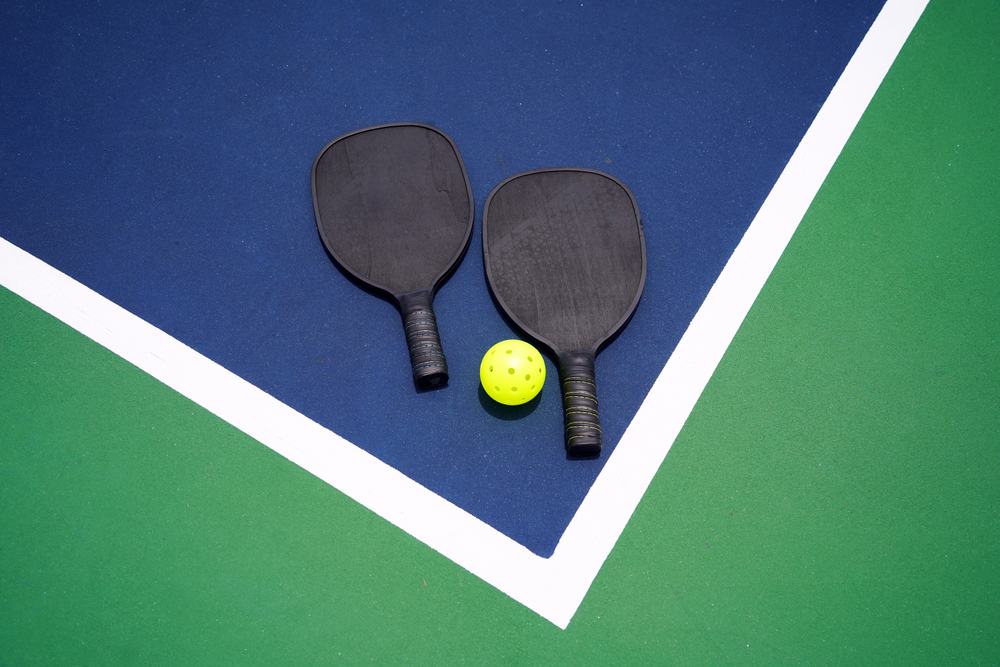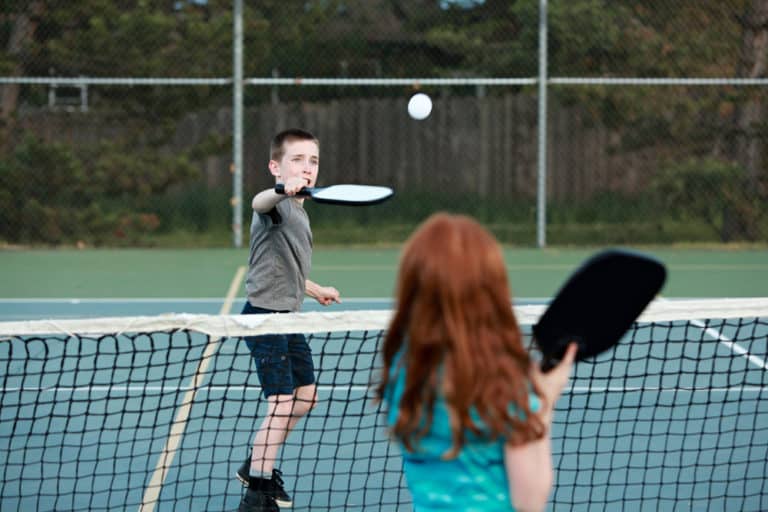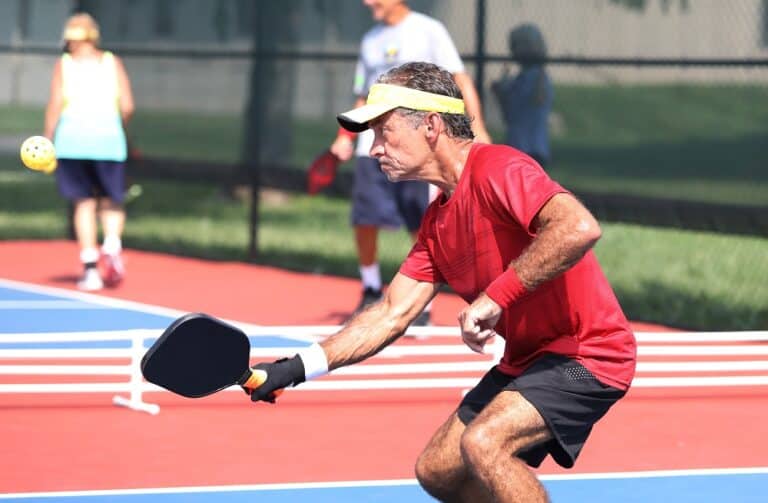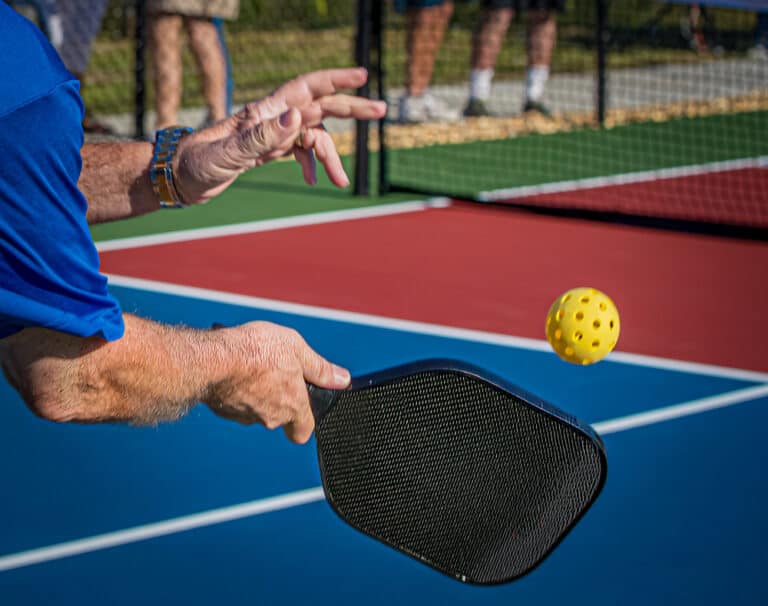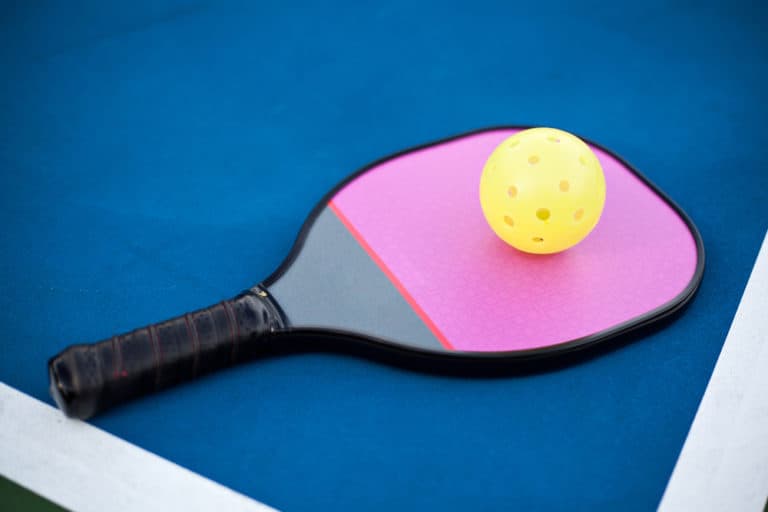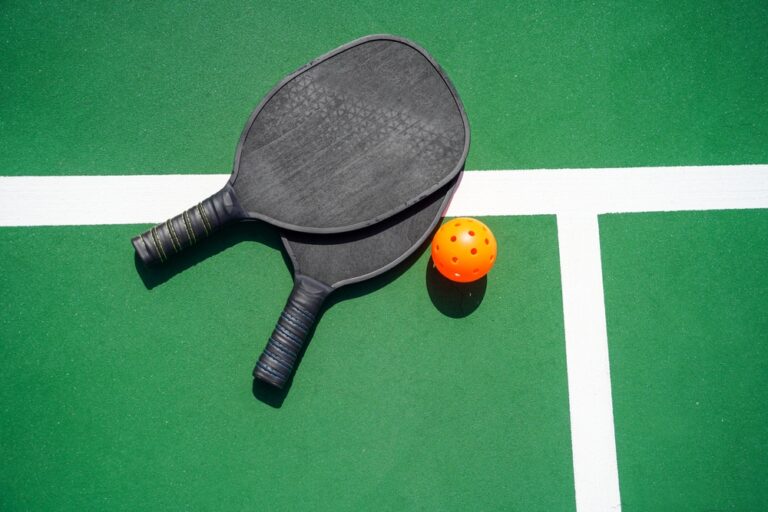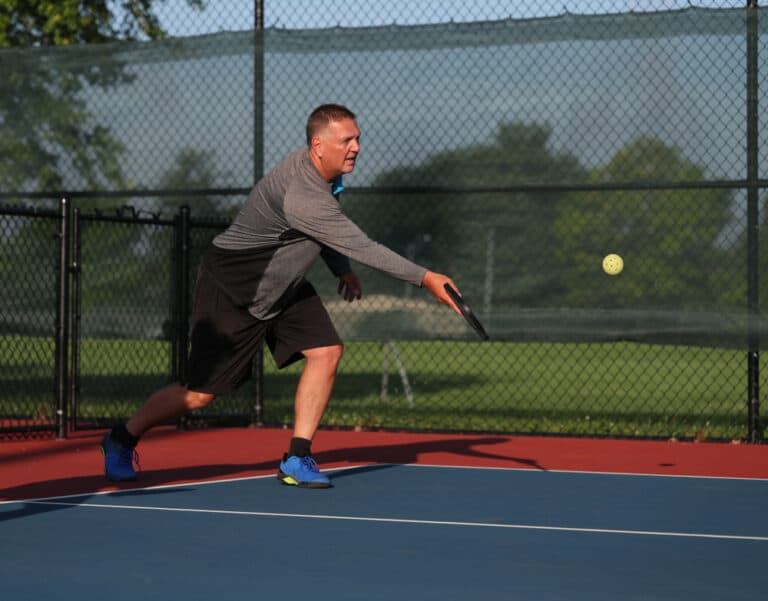How Can You Tell If A Pickleball Paddle Is Bad?
Since the invention of pickleball in 1965, and although the sport really took off around 1972, it is only recently that this popular pastime became a household name. But just like badminton, tennis, and ping pong from which it originated, the strength of your game depends on the character of your equipment. If your pickleball paddle is bad, it will most definitely affect your performance.
You will notice if your pickleball paddle is bad by the difference in efficiency when hitting the ball. The paddle might become unresponsive, sound dull when you hit the ball, or you can ascertain by the appearance of the paddle that it might be damaged or worn out and needs to be replaced.
To pick up your game in pickleball, you need to become familiar with all the factors that can overthrow your performance. Whether it’s a bad paddle, a grip too large or too small, an incorrect pickleball ball, or dilapidating injury affecting your match, it’s always good to know the best options if you want to upgrade your equipment.
What Does It Mean If Your Pickleball Paddle Is “Dead”?
Like every sports equipment item, a pickleball paddle has an expiry date. That depends entirely on how often and indeed how hard you play the game. When a player can differentiate a discrepancy in the sound of the ball hitting the paddle, they classify this as the paddle becoming “dead.”
Dead spots can be caused by water damage, heat damage, or simply wear and tear that will lend a dull sound to the paddle as soon as the ball connects with the face of the paddle. When you become unsure or uncomfortable with the performance your paddle gives you, it is time to replace it with a new one.
3 Ways To Tell If Your Pickleball Paddle Is Bad
When you get used to your pickleball paddle, you become familiar with the sound and feel of the paddle when you hit the little perforated ball. When your paddle starts to deteriorate, some apparent signs indicate that you need to upgrade.
- When you first use your paddle, you will notice that the pickleball ball has a sharp popping sound when you hit it. Some paddles have a lower tone. But either way, you will realize where to hit the ball for the best control and drive. This spot on the paddle is called the sweet spot.
Over time the paddle might become brittle or disintegrate from the core and release a duller sound with each strike. The difference in sound might be infinitesimal, but a loyal Pickleball player knows his equipment and can easily distinguish between the difference in tone.
- After you discover where your paddle’s sweet spot lies, you will aim to knock the ball at the exact angle where you will achieve the optimal response. With practice, you will continually strike the ball in the same spot and recognize if that sweet spot becomes less responsive. If the echo on your paddle decreases and you’re not achieving the same results, you should look into acquiring a new paddle.
- And then there are the obvious ways to notice that your paddle is less maneuverable. Apart from the performance not being up to par, you will be able to perceive tiny dents in your paddle over time. There are slight imperfections that indicate regular use might have damaged the core. When you hold your paddle up to the light, you’ll detect an uneven surface on the paddle that will eventually influence your game.
How Long Does A Pickleball Paddle Last Before It Goes Bad?
It’s natural for a pickleball paddle to have an expiry date. A graphic or composite paddle will last two to three years for recreational players through regular use and everyday wear and tear. Competitive pickleball players make sure they exchange their paddles at least once a year. Thanks to their sponsors, they might even switch more often.
People who use wooden paddles might get between one to five years out of their paddle, but eventually, the paddle will go dead, and you will need to exchange it for getting the most reward out of their game.
How To Care For You Pickleball Paddle
Not everyone values their pickleball equipment similarly. Some individuals might take more care of their paddle than others. If you simply want to play the game for fun, your priority might not be to keep your pickleball paddle in pristine condition, and its expiry date might approach sooner than you expected.
However, to get an additional year or two out of your paddle, you can practice a few guidelines to extend its life, like cleaning the paddle and the grip after playing or at regular intervals and not mishandling your paddle by throwing, hitting, or smacking it into the court. Leaving it in the sun or the heat in your car for too long might also damage the honeycomb core.
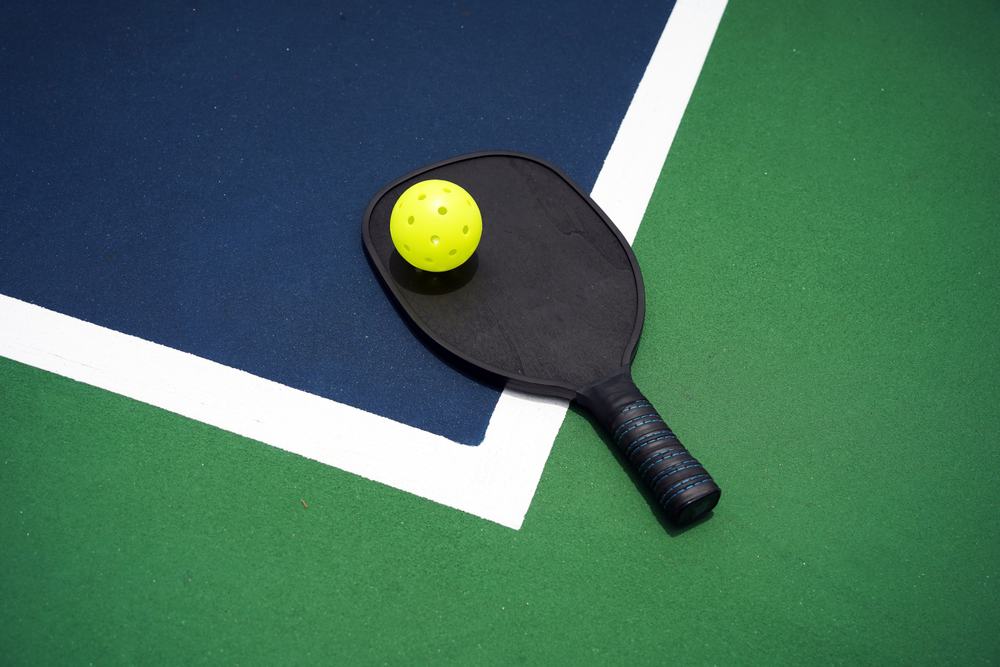
How To Choose A Pickleball Paddle
Choosing the right pickleball paddle is tricky and differs from person to person.
- Firstly, you will need to consider the weight of the paddle. Lighter paddles give you more control over your serve, but heavier paddles add more power to your drive. You should also factor in any previous arm or elbow injuries that might not benefit from a heavier paddle.
- Another consideration is from what material the paddle is made. Between wood, graphite, and composite materials, all three types of paddles have pros and cons. The best option is to try out each and judge which kind of paddle best suits your needs.
- For new pickleball players, it’s best to visit your closest sports equipment agent and take each paddle for a test drive. Then you also get different shapes of paddles which each has its strengths and weaknesses. You will have to choose from an elongated paddle, a paddle with a broader body, or one without an edge.
- Another critical component is judging your grip size. It won’t benefit you from having a paddle grip that might be too small or too large for your hand because it will negatively impact how much control you will have over your delivery of the ball.
- The final aspect to regard is the color of the paddle you choose. Apart from keeping up with the trends and having a beautiful – however legal – print on your paddle, you can also obtain a simple single-colored paddle that holds a particular advantage when you have a yellow paddle. Seeing that the pickleball ball is also a bright yellow color, it will favor you in your serve. Your opponent will be less likely to read how you hit the ball.
What Determines A Durable Pickleball Paddle?
Deciding which pickleball paddle to buy depends on more than just the price. And often, the case is that the most expensive paddle is not the most durable. If you want your paddle to last for many years to come, you should look into what the paddles are made of and what material will best suit your style of play.
With pickleball becoming more popular every day, newer and better paddle designs are released with more enhanced features every year. But in general, your pickleball paddle should have a non-slip grip cushioned to the size of your hand. The paddle should be a durable material that will last through power shots and give you enough control over your ball delivery.
How To Clean Your Pickleball Paddle
When joining a game, cleaning your pickleball paddle should be part of your daily routine. Maintaining cleanliness will improve your game and make your equipment last much longer. Perpetuating a healthy pickleball paddle has three aspects: clean, replace, and store.
- The first priority should be cleaning the hitting surface of the paddle. The face of your pickleball paddle has thousands of minuscule bumps, which aids in creating a quicker spin on the ball when you hit it. This uneven surface accumulates plenty of dirt and dust while playing pickleball.
To clean the face of your paddle, you should use a lint-free microfiber cloth with either very little water or a non-sticky glass cleaner. Using too many chemicals on your paddle will leave an adhesive residue that will collect more dust and grime and make it challenging to create a spin on your ball.
- Another essential factor to consider is the grip of your paddle. You will be unable to maintain your grip on your paddle, which can subsequently even lead to injuries. Over time, it collects sweat, dead skin cells, and dirt from playing the game and can become scruffy and slippery.
To remove the grime buildup and muck on the grip, you can use the same damp microfiber cloth to wipe the dirt away. Use another material to dry it afterward. After some time, you’ll realize that the cushioned support on the grip will deteriorate, and you’ll have to replace the handle coating with a new one. The paddle will quite possibly outlive the grip a few times, and you’ll change the grip on your pickleball paddle more often than it will be necessary for you to replace the paddle.
- After-match care is just as critical as maintenance of your pickleball paddle. Harsh weather conditions can negatively impact the quality of your paddle and cause the core of the paddle to become brittle. Severe heat and wet conditions could result in the paddle’s hitting surface separating from the center, and producing dead spots.
7 Guidelines To Make Your Pickleball Paddle Last Longer
For every type of equipment, there are everyday practices you can incorporate into your routine that will make your pickleball paddle perform better and last longer.
- Most importantly, keep your paddle clean. Get a light microfiber cloth you can throw in your bag and carry along. After every game, simply dampen the cloth with water or a lightweight glass cleaner and give your paddle and grip a nice wipe to rid it of dirt, dead skin, and sweat.
- Pay attention to what you throw into your bag with your equipment. Metal objects like keys can scratch your paddle and damage it.
- Don’t use your paddle for anything other than hitting the tiny yellow ball. Some players have a habit of clinking their paddles after a game in celebration. Others merely chuck the paddle on a hard service like a bench or the court. Take care of your paddle, and your paddle will take care of you.
- On the same subject, don’t scrape up pickleball balls from the court with your paddle. This action damages the edge of your paddle and can directly impact your game.
- Store your pickleball paddle in a safe, durable place when you’re not playing. Please don’t leave it outside in the cold or the blazing heat in your car. The heat, cold, and damp air will impact the paddle’s core and affect the sweet spot on your paddle.
- Watch where you discard your paddle. Please protect it from people accidentally stepping on it and breaking it. Even the weight of heavy objects can crack or harm the paddle to the point where you can’t use it anymore.
- Most importantly, a pickleball paddle is not the most durable item in your cupboard, and accidents happen. When your paddle does suffer any damage best to take it to your sports shop to see if they can repair it. Alternatively, you’ll have a shining excuse to buy a new paddle.
Can A Bad Pickleball Paddle Cause Injuries?
A pickleball paddle can go bad for several reasons. The hitting surface depreciates and causes dead spots, making it more troublesome to hit the perfect shot. Or your grip might be disintegrating and causes you to work harder on keeping hold of your paddle.
The extra exertion you implement to play a decent game could cause strenuous injuries to your arm and elbow. When your paddle starts performing poorly, you need to compensate by holding the paddle differently or simply tighter. If you do this too long, the injuries might become permanent, and you’ll have to seek medical advice to get rid of them.
What Are Common Pickleball Injuries?
Most pickleball injuries are gradual and developed through repeated movement. Common examples of pickleball injuries are:
- Shoulder strain is caused by an overextension of the shoulder joint, which can damage the muscles and inhibit movement of the shoulder altogether.
- Pickleball elbow is when you overuse or improperly use the elbow back and forth. The stiffness in your elbow can lead to soreness which will increase over time.
Conclusion
It is clear that pickleball is a fun activity and a hardcore sport among certain individuals. And maintenance of your pickleball equipment is just as necessary as in any other sport. Knowing when your pickleball paddle is bad is as vital as changing it when it does. Whether it’s from age, overuse, or failure to maintain, it can cause injury, a bad match, or even worse, an embarrassment when you don’t care for your pickleball paddle. But with enough TLC, your paddle can last you for a long time.
References
- https://www.si.com/review/best-pickleball-ball/
- https://www.si.com/review/best-pickleball-paddle/
- https://www.holabirdsports.com/blogs/news/how-to-choose-a-pickleball-paddle
- https://blog.pickleballcentral.com/2019/02/14/is-your-pickleball-paddle-dead-ways-to-know-if-its-time-for-a-replacement/
- https://www.pickleballcentral.com/Pickleball_Paddle_Guide_s/49.htm#Top
- https://www.gammasports.com/pickleball-paddle-cleaning-guide
- https://www.pickleballuniversity.com/home/dont-buy-a-pickleball-paddle-until-you-read-this-guide

